International Women’s Day 2022 – Women in STEM
The 8th of March marks the United Nation’s International Women’s Day, a day which is dedicated to celebrating women’s achievements through increasing their visibility (both past and present) whilst also calling out against gender-based inequality which to this day still persists. We thought what better way to honour this day than through celebrating some of the women who have helped shape the fields of Science, Technology, Engineering and Mathematics (STEM).
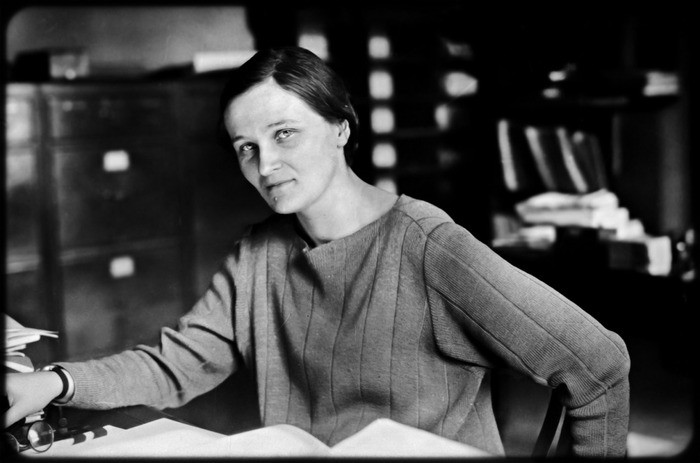
Cecilia Payne – image from Medium
Cecilia Payne – Astronomer
We are huge fans of astronomy and space over here at the office, so I was so excited to discover Cecilia Payne whilst doing research for this blog post. Cecilia was the first person, either male or female, to be awarded with a doctorate in Astronomy from the University of Harvard in Boston, USA. She later went on to become the first woman to head a department at the University Harvard, as the Chair of the Department of Astronomy.
Despite clearly paving the way for women in STEM through her academic appointments, Cecilia also helped shape our understanding of stars and planets. During her Doctorate degree, Cecilia asked and answered the question which would go on to change the way we think of outer space, the question being “what are stars made of?”. It’s helium and hydrogen in case you were wondering!
Her initial findings were rejected in the world of astronomy, due to running counter to the popular and accepted theories at the time which posited that there were no elemental differences between the sun and planets. However, her ground breaking discovery is now one of the foundations in modern astrophysics – which is pretty cool if you ask me.
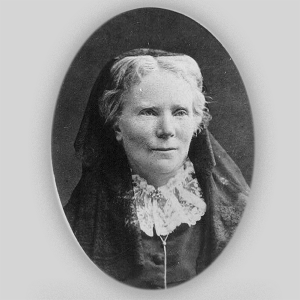
Elizabeth Blackwell – image from National Women’s History Museum
Elizabeth Blackwell – Medical Professional
Born in Bristol in 1821, Elizabeth Blackwell was the first woman to be awarded with a Doctor of Medicine in America from New York’s Geneva Medical College. Now, that is certainly something to be proud of!
Blackwell’s admission into the Geneva Medical College was no easy feat, with the all-male faculty originally voting for her admission into the college as a joke. She was originally rejected from all other colleges that she had applied for, making her admittance to this medical college in 1847 a pretty extraordinary feat. Once she had finished her studies, Elizabeth moved to Paris, where she ran clinics whilst also training to become a midwife. Her career was, however, cut short due to contracting an illness which left her blind.
Instead of giving up on her dreams, she used her medical knowledge and her determination to help campaign for greater equality for women wishing to pursue a medical career across Britain. This resulted in the creation of the National Health Society in 1871, whose aim was to educate people about the benefits of proper hygiene and healthy lifestyles, with the still relevant motto of “Prevention is better than Cure” at the heart of their organizational ethos. Elizabeth also became the first woman to have her name entered into the British General Medical Council’s medical register in 1895.
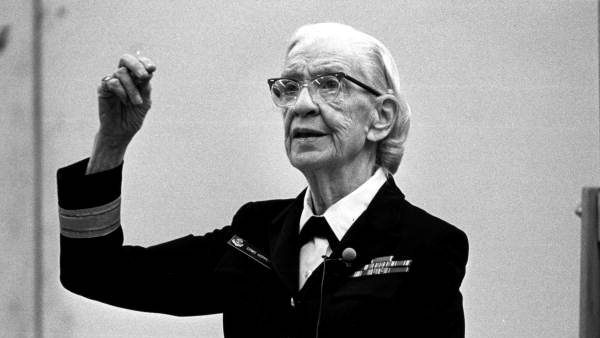
Grace Hopper – image from Grace Hopper Celebration
Grace Hopper – Computer Scientist
Also known as the Queen of Code or Amazing Grace, Grace Hopper used her technological skills during the Second World War whilst serving for the US Navy. She gained a Master’s degree in 1930 and a PhD in 1934 in mathematics from the University of Yale – a rare accomplishment for anyone at the time of competition regardless of gender or sex.
Grace went on to become one of the first computer programmers to work on the Harvard Mark I (an early proto-computer built during World War 1), and helped to develop the first high-level programming languages. She also invented the first program which translated program coding into machine language.
On top of her incredible technological achievements, Grace was also the oldest serving officers in the US Armed Forces, using her computer skills to help US military efforts during both the Second World War and Cold War where she was responsible for punching machine instructions onto tape.
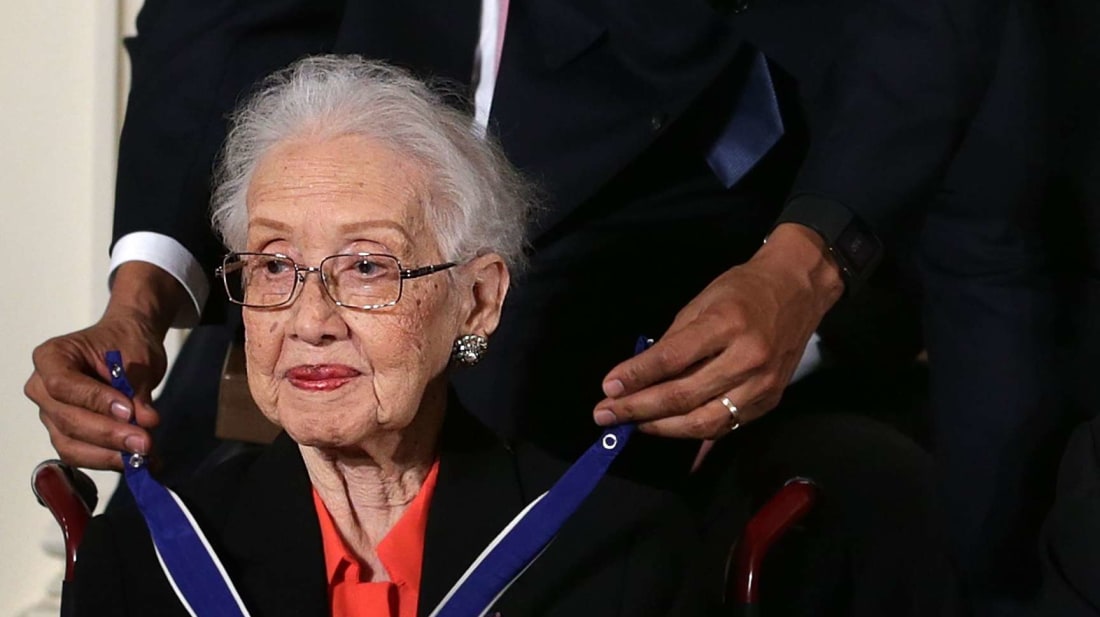
Katherine Johnson – image from Mental Floss
Katherine Johnson – Space Exploration
Katherine Johnson was an American mathematician whose work helped send astronauts all the way to outer space. She is perhaps best known for her extortionary contribution to the 1962 orbital mission of John Glenn which cemented her integral role across US space exploration until the day that she would retire.
Katherine was awarded a double degree in Mathematics and French from West Virginia State University, and later went on to work at the National Advisory Committee for Aeronautics (NACA) West Area Computing unit with a group of other African American women who manually performed complex mathematical calculations that were passed onto the program engineers. These ladies, known as the West Computers, went on to provide the mathematical computations for what would like foundation to early successes of the US Space program, all whilst being subject to the rules and hardships which came with racial segregation.
Katherine’s determination did not end here; following her tremendous success with the ladies which made up the West Computers, she went on to co-author a paper regarding the calculations for placing a spacecraft into orbit alongside one of the group’s engineers. This was the first time a woman had ever appeared as a listed author on a research paper, and led to the publication of a further 26 research papers under her name.
Despite retiring in 1986, Katherine was awarded the Presidential Medal of Freedom by former President Barack Obama, further anchoring her position as a STEM legend for the rest of time.
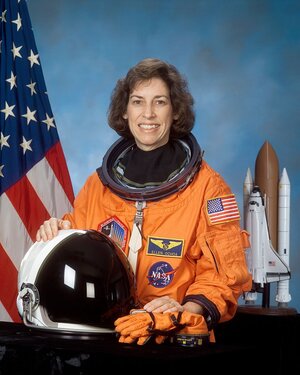
Ellen Ochoa – image from McAuliffe-Sheppard Discovery Centre
Ellen Ochoa – Astronaut
Ellen Ochoa is an American Astronaut, and in 1993 became the first Hispanic woman to travel into space. Born in Los Angeles, Ellen was awarded a PhD in electrical engineering from the Stanford University before working as a researcher for the National Aeronautics and Space Administration (NASA). During her time as a researched, she helped to create an optical system which detecting imperfections through repeating patterns, as well as a system which helped to with object recognition.
Ellen becomes an astronaut in 1990 following her selection to participate in NASA’s astronaut program; she later went to serve as a mission specialist onboard the STS-56 missing of the space shuttle Discovery, which put her into the history books as the first Latina to have ever visited outer space. She then went on to become the second female Director of the Johnson Space Centre in Houston where she worked on the Orion project which aimed to expand human exploration of outer space to new destinations, including Mars. She now works as the chair of the National Science Board in the USA – an organisation which advises the American government on policies on science and engineering, as well as education on science and engineering.
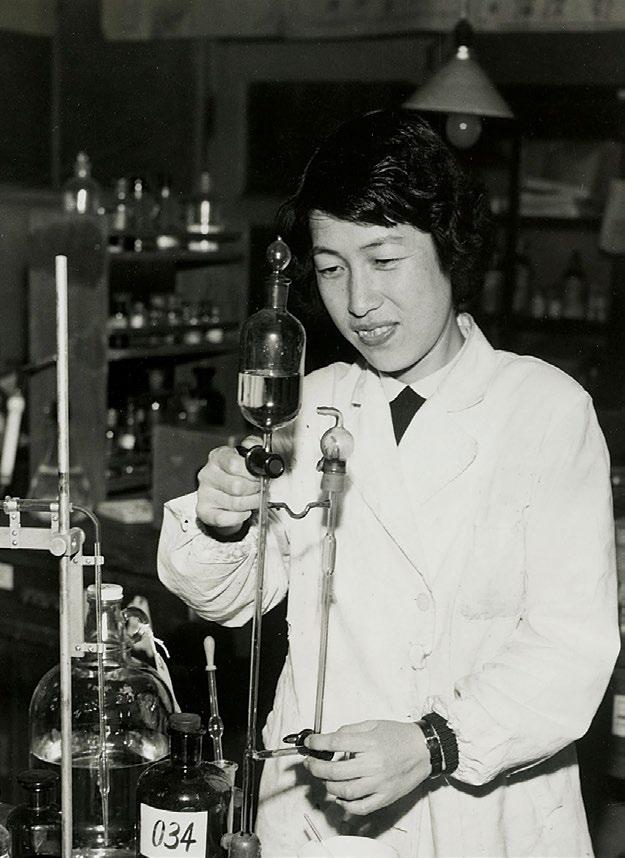
Katsuko Saruhashi – image from Issuu
Katsuko Saruhashi – Geochemist
Katsuko Saruhashi, meaning strong-minded or victorious when translated into English, has made enormous contributions to the world of science. Not only did she develop ground breaking research on the role in which the ocean plays in the absorption of carbon dioxide (CO2), but her work on the threat and dangers of nuclear testing also sent shock waves across both the global scientific community and political sphere.
Not only was Katsuko the first woman to go on to gain a PhD in chemistry from the University of Toho, but she was the first woman to be elected to the Science Council of Japan where she would light the torch for equal opportunities for female scientists. She later went on to establish the Society of Japanese Women Scientists, as well as the Saruhashi Prize for female scientists.
After her studies, Katsuko went on to join the Geochemistry Laboratory at the Meteorological Research Institute, now known as the Japan Meteorological Agency, where she studied CO2 levels in observed seawater. Her research at the institute laid the foundation for her method of measuring CO2 through temperature, pH and chlorinity – now known as Saruhashi’s Table, and the global standard for measuring CO2 in seawater.
Using these tools, she discovered that the Pacific Ocean was releasing more CO2 than it was absorbing; this finding remains crucial and relevant even now when discussing climate change and environmental degradation.
Final Thoughts
This blog post has been one of the most enjoyable pieces I have written to date, and that is all due to the information that I have learnt about women that I did not know existed prior to starting my research.
These individuals are but a drop in the ocean of women who have helped to shape STEM, and I wish I had the time and the platform to continue writing about all these discoveries that I have made in just a few days of intentional searches.
As I draw this International Women’s Day blog post to a close, I have one thing to ask you: take just twenty minutes of your evening to google the history of women in STEM, or even to research the forgotten figures within this incredible field which continues to inspire and create with each day that passes. I promise you that you will be left with a feeling of awe and admiration, motivated to take on whatever task or challenge it is that you may face – just as I have.
Bibliography
- Five Fast Facts About Technologist Grace Hopper
- Cecilia Payne-Gaposchkin – British-born American astronomer
- Cecilia Payne and the Composition of the Stars
- Who was Elizabeth Blackwell?
- The Untold History of Women in Science and Technology
- Ellen Ochoa – American astronaut and administrator
- About the NSB
- Katherine Johnson Biography
- International Women’s Day
- Grace Murray Hopper (1906-1992): A legacy of innovation and service
- Giants in History – Asia’s Women in Science
- Meet Katsuko Saruhashi, a resilient geochemist who detected nuclear fallout in the Pacific
- Harvard Mark I – computer technology